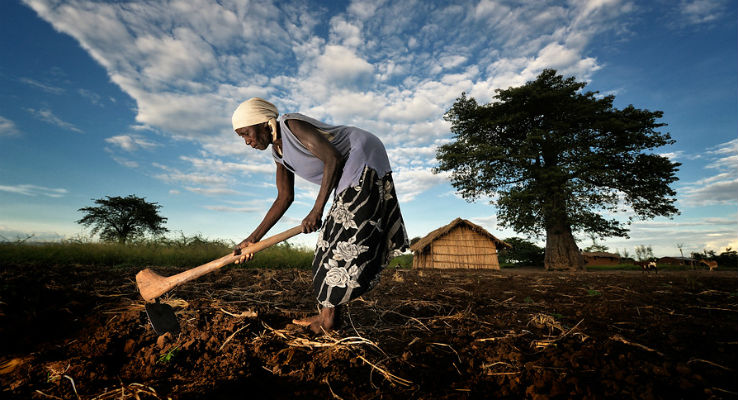A fresh perspective on tourism branding. . . lessons from integral Kumusha model
Zimbabwe’s tourism branding is at a critical juncture, necessitating innovative strategies to effectively showcase the country`s distinctive cultural identity and breathtaking natural beauty.
With a rich heritage and diverse landscapes, Zimbabwe has immense potential to captivate tourists and stand out in a competitive global market. However, the tourism sector in the country necessitates innovative perspectives and strategies for branding that accurately showcase its distinctive attractions.
The Integral Kumusha model, an avant-garde community-driven initiative in Buhera, offers a significant opportunity to redefine Zimbabwe`s tourism branding.
The Integral Kumusha model emphasizes community engagement, cultural preservation, and sustainable practices, providing valuable insights for enhancing Zimbabwe`s tourism branding.
Through promoting authentic and immersive experiences for visitors, this approach can help Zimbabwe distinguish itself, build a robust brand identity, and stimulate economic growth through sustainable tourism development.
The Integral Kumusha Model: A Community-Driven Approach The Integral Kumusha model, led by Dr Taranhike and Christina Taranhike, commonly known as Mai Chimuti Brand, is a community-focused initiative that emphasizes community involvement, cultural preservation, and environmental sustainability, aiming to provide authentic tourism experiences in Zimbabwe.
Through empowering local communities, this model highlights Zimbabwe`s cultural heritage, such as music, dance, and food, while promoting cultural exchange and supporting local economic development through community-based tourism.
The models dedication to sustainable practices helps mitigate the industrys carbon footprint, fostering long-term sustainability. In addition, the innovative storytelling approach effectively communicates Zimbabwe`s cultural identity, distinguishing the country as a unique tourist destination.
This strategy rebrands Zimbabwe`s tourism industry by offering an authentic and immersive experience.
Lessons for Zimbabwe`s Tourism Branding
The Integral Kumusha model offers valuable lessons for Zimbabwe`s tourism branding:
Community-Driven Branding
Community-driven branding is a powerful approach to tourism development, prioritising community engagement and participation to create authentic and immersive experiences. By empowering local communities to take ownership of their cultural heritage and natural resources, tourism initiatives can promote cross-cultural understanding, support local economic development, and preserve cultural identity.
Global examples of successful community-driven branding include the Native American-owned tourism initiatives in the United States, such as the Navajo Nation`s Monument Valley, which showcases the rich cultural heritage and traditions of the Navajo people.
In Africa, examples include South Africas Xova community-led tourism initiative, which provides authentic cultural experiences and supports local economic development. Similarly, in Rwanda, community-based tourism initiatives, such as the Kinigi Community Development Fund, promote cultural exchange and support local communities while preserving the countrys rich cultural heritage.
Cultural Preservation
Preserving cultural heritage is essential for differentiating a country as a unique tourist destination. Zimbabwe`s rich cultural heritage, including its traditional music, dance, and food, offers a distinct cultural identity that can be leveraged to attract tourists.
Global examples of successful cultural preservation initiatives include Japans traditional tea ceremonies, which showcase the countrys unique cultural heritage and traditions.
In Africa, examples include Ghana`s efforts to preserve its ancient cultural heritage sites, such as the Larabanga Mosque, which attracts tourists and supports local communities.
In Ethiopia, the preservation of ancient rock-hewn churches in Lalibela has become a significant tourist attraction, contributing to local economic development and fostering cultural exchange.
Through maintaining its cultural heritage, Zimbabwe can stand out as a distinct tourist destination, drawing visitors interested in genuine cultural experiences.
Sustainable Branding
Adopting environmentally friendly practices is crucial for promoting long-term sustainability and enhancing a country`s brand reputation in the tourism industry. Through embracing sustainable tourism practices, countries can reduce their environmental footprint, support local communities, and attract eco-conscious tourists.
Global examples of successful sustainable branding initiatives include Costa Ricas eco-tourism industry, which has positioned the country as a leader in sustainable tourism practices. In Africa, examples include Botswanas commitment to sustainable tourism, which has helped preserve the country`s natural resources and wildlife.
Locally, Zimbabwes eco-lodges, such as the ones in Hwange National Park, offer tourists an opportunity to experience the countrys natural beauty while supporting sustainable tourism practices.
Through the adoption of environmentally friendly practices, Zimbabwes tourism industry can improve its brand reputation, attract eco-conscious tourists, and contribute to the countrys long-term sustainability.
Innovative Storytelling
Embracing innovative approaches to storytelling is essential for staying competitive in the tourism industry and adapting to changing market trends. Through leveraging digital technologies, social media, and immersive experiences, countries can tell compelling stories that showcase their unique cultural identity and natural beauty.
Global examples of successful innovative storytelling initiatives include New Zealands “100 percent Pure New Zealand” campaign, which used stunning visuals and immersive storytelling to promote the country’s natural beauty. In Africa, examples include South Africas “Live with Pride” campaign, which used social media and influencer marketing to promote the country`s cultural diversity and natural beauty.
Locally, Zimbabwes tourism industry can leverage innovative storytelling approaches, such as virtual reality experiences and social media campaigns, to showcase the countrys unique cultural heritage and natural attractions, such as Victoria Falls and Hwange National Park. By embracing innovative storytelling, Zimbabwes tourism industry can stay competitive, attract tourists, and promote the countrys brand identity.
Conclusion
The Integral Kumusha model serves as a powerful example of community-driven initiatives that can boost sustainable tourism and stimulate local economic growth.
Through empowering local communities to take ownership of their cultural heritage and natural resources, the model promotes authentic and immersive tourism experiences that benefit both tourists and local communities.
Zimbabwes tourism industry can leverage this approach to enhance its brand identity, highlighting the countrys rich cultural heritage and breathtaking natural beauty, including its iconic Victoria Falls, Hwange National Park, and Matobo Hills.
Furthermore, the Integral Kumusha models focus on community engagement, cultural preservation, and environmental sustainability can help Zimbabwes tourism industry differentiate itself in a competitive global market, attracting tourists who value authentic and responsible tourism experiences.
It is through adopting this approach that Zimbabwe’s tourism industry can contribute to the countrys economic growth, cultural preservation, and environmental sustainability, to enhance the countrys brand reputation and global appeal.
Charles Mavhunga co-authored textbooks in Business Enterprising Skills and is currently studying for a Ph.D. in Management at Bindura University. He can be contacted at charles.mavhunga@gmail.com .Cell:0772989816-herald









